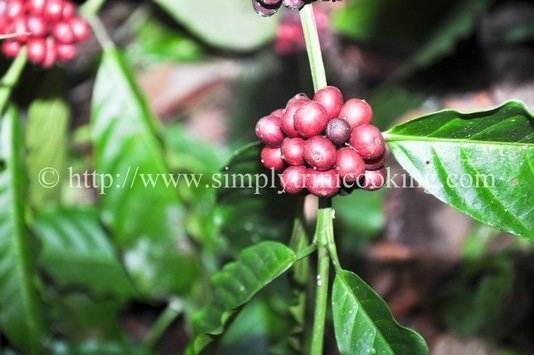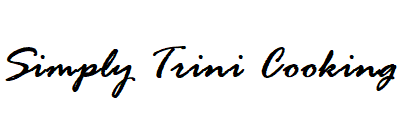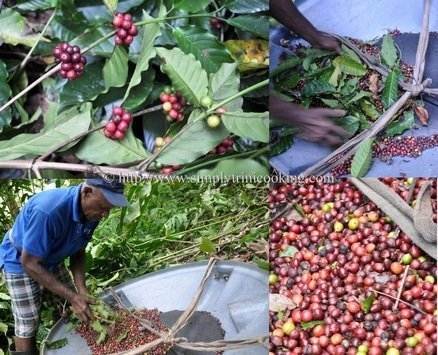Everyone likes a good cup of coffee but what about a coffee story ? Like the cocoa story I did some years ago I’m back with another. Here’s my story of Trinidad Coffee….
I am not a regular drinker of coffee, like my father-in-law who would only drink it black. People like him are the the real aficionados. They unequivocally state that instant coffee, though cheaper, could never stand next to quality freshly milled coffee, which is by the way hard to come by.
So my search for a good cup of coffee began with me visiting an estate. I must admit that I am an unlikely candidate to search for a good cup of coffee because I didn’t know anyone at the time. In retrospect, this story found me instead and being the adventure seeker, I gladly went on the journey….
I see Mr. Mikey every other Sunday when there is church service at the Community Center at Lluengo Village. I did not know much about what Mikey did, all I knew was that he had a love for parang music and playing the cuatro.
After service, one Sunday morning, Mr. Mikey approached me about learning some more chords on the cuatro since he played, but did not know the names of chords. One thing led to another as we talked; and in our conversation I found out he owned a “little cocoa estate” in the mountains of Rincon, Las Cuevas.
We spoke about living off the land and enjoying the fresh air, fruits and the peaceful environment. Next thing I knew I was talking about my post about making cocoa using a mortar and pestle using tonka bean and spices, and how I would love to do a post about making coffee the traditional way.
That struck a common chord between us and since I had to do the coffee story – that had been mulling around in my head for the past few years- I asked him if he grew coffee on his estate. Well, to my surprise, he not only grew coffee but he brewed his own as well.
A light switch went off in my mind…I swear you could see it hovering above my head saying, “Bling, bling! Idea alert, idea alert! ” lol
I was excited and wanted to visit and soon enough we planned to spend a day at the estate. A few weeks later my wife, son and I were driving on the North Coast Road to Las Cuevas to meet Mikey at his cocoa estate.
 Me, all ready for de bush in my tall boots lol
Me, all ready for de bush in my tall boots lol
Mikey was welcoming! The short trek up to the estate hut was where I put on these boots Mikey gave me. He explained that no one should wander the estate without boots. There may be snakes lurking around. I was eager to walk around the estate, however not too eager to cross the path of any snake, especially a Mapepire or Coral Snake. Now it was time for this “cocoa panyol” to start walking lol 🙂
The Coffee Plant (Coffea arabica)
The species of coffee most produced in Trinidad was the Robusta coffee. The plant is sensitive to cold and warm conditions and so strives best in levels of high humidy and rainfall. In Trinidad, coffee estates are most found in the hilly areas, mostly cared for by small farmers. In recent years, the industry has been greatly affected by the plant-borne “diseases and pests, economic conditions and inefficient farming practices “(source).
The plant needs adequate space and ample shade to mature or strive. The right amount of sunlight is required at different stages of the coffee tree’s growth. Also, the shades used can provide additional income for the farmer while the tree matures. In the past, to provide the shade, Immortelle trees were used. You can see them towering high above the trees with their branches like wings spread out providing the necessary shade.
 These small coffee trees were part of the nursery on the estate.
These small coffee trees were part of the nursery on the estate.
Mature plants will grow to 3 – 3.5 m tall.
Seeds, not processed, can be used to grow into small plants.
 On the mature plant, the berries appear in batches of red and green.
On the mature plant, the berries appear in batches of red and green.
The deep red berries are ready to be picked.
 They are picked by hand. It very is labour-intensive.
They are picked by hand. It very is labour-intensive.
Sometimes the trees were trimmed while it is being harvested.
Processing the Coffee
Now back to the story …..
Picking the beans was tedious. Mikey had his own method of removing and capturing all the berries. He used the wide lid of an old water tank to catch and keep the berries in one place. Once the berries were picked they were processed. Most times the berries are dried in the sun for a couple of weeks before they are stored. The pulp is removed and dried with the parchment skin still on it so it is left to ferment. The pulp liquifies as the temperature rises for a week. This gives the beans flavour.
 dried beans are placed in a manual mill like the one above.
dried beans are placed in a manual mill like the one above.
It is used to removed the endocarp (or dry husk).
 The husk and the beans are separated through a fanning and blowing method.
The husk and the beans are separated through a fanning and blowing method.
Roasting
 The husked beans were roasted in an iron pot over a wood fire
The husked beans were roasted in an iron pot over a wood fire
The dried beans are roasted at about 200-250 degrees F for 1 to 2 hours. The beans become brown to black in colour and brittle. During the roasting process, the beans are broken down and the thin shell or chaff (which feels like dried leaves) is removed. The remaining piece of kernel is called coffee nibs. (The nibs contain about 400 different chemicals responsible for the coffee’s flavour.)
The beans were stirred throughout the roasting process to prevent burning. The outer shell dries and cracks out. Roasting the beans should happen outside as there is a lot of smoke involved. For this reason, if you want to roast at home, you should roast no more than 1/4 lb of beans at a time.
 After roasting the coffee is “fanned” again.
After roasting the coffee is “fanned” again.
Grinding
The nibs are ground in a manual mill. Grinding brings out the flavour of the coffee. Generally, the finer the coffee is ground , the quicker it is brewed.
Brewing
Now for the final step: the task of brewing coffee.
Basic Instructions:
 Bring water to boil. Then add 1 heaped tbsp of the ground coffee.
Bring water to boil. Then add 1 heaped tbsp of the ground coffee.
 Continue boiling for a few more minutes.
Continue boiling for a few more minutes.
Pay close attention and don’t let it over boil.
 Remove, strain, sweeten and serve hot.
Remove, strain, sweeten and serve hot.
 One cup of freshly made coffee. It doesn’t get better than this.
One cup of freshly made coffee. It doesn’t get better than this.
Ah could hear ah parang coming on lol 🙂
The look and smell of the roasted beans could definitely send you into a lucid state, or possibly down memory lane. For a while I also found myself on Henry Street, POS smelling the coffee roasting from Hong Wing Coffee as I walked up to Spektacular. Eventually, I found myself reflecting on the whole experience of picking the beans, processing it, and finally watching it brewing. When I tasted the brew I felt myself travel to the green hills of Rincon back to the estate where it all began.
Of course other memories rushed in around this topic of coffee, like the first time I saw a pooknee being used while brewing coffee over a wood fire. Maybe next time I’ll write about that.
…..What a trip!
Liked this post? Why not share your experiences in the comment box below.
Ah gone 🙂





Great write up.. though I’m not a regular coffee drinker, reading that bit about smelling coffee on Henry Street does bring back a lot of memories. Something about this article, just reaches inside and tugs at history that binds us to the history of our beloved island… well done.
I am so grateful for this story – it not only brings back a lot of memories but it truly allows you to appreciate the time and effort which goes into a finished product. Though I am not a coffee drinker, I love the smell of coffee and as I look at the pictures posted, I can see the love and care taken into brewing this cup of coffee in the end. Thank you so much for this post.
The story reminds me of a time when our church was on camp and we went on a hike and we passed through a cocoa plantation and its was awesome…we picked the ripen cocoa and savor the seeds, really lovely, I dont drink coffee now but I remember when I was little my Grandma would make a big pot and everyone would drink coffee, from the not so young to the very young, that smell…mmmmm…..its stimulating….I enjoyed reading the story…
Felix, thanks for sharing your story.
A relative had cocoa and coffee plantation in Morne Diablo and there were orange and banana trees planted amongst the cocoa and coffee trees. Every year we would visit them and go to the plantation to pick oranges. And we always came across a few big snakes too. Scary they were…
Those oranges were the sweetest,
I remember when I was a child back then, whenever my dad had the flu he would brew homemade coffee and add some forest park puncheon rum to it, and drink that black coffee with a couple caffenol. This was his cure for the fly and fever. Do they still make caffenol?
I haven’t used caffenol in ages. Maybe it’s still around I don’t know.
I am trying to source Trinidad-grown coffee for my ice cream business. Any suggestions as to where I can find local growers/estates?
Try https://www.hongwingcoffee.com/
I am trying to get my own coffee beans here in Trinidad to roast on my own. Any idea where I can get them to purchase?
No idea sorry.
Trinidad grown coffee beans are available from Cafe Vega ()
Thank you